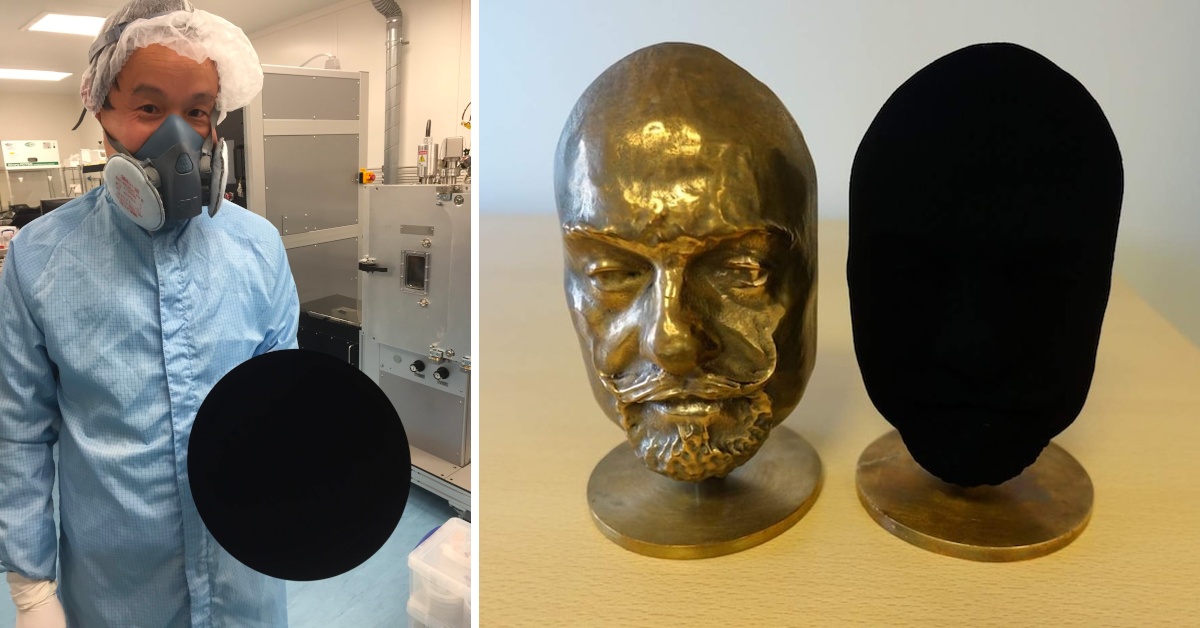Want a black? A real one? Well, check out Vantablack.

If a color can hold a world record, Vantablack probably does. According to UK-based technology company Surrey NanoSystems, the super-black coating holds an “independently verified world record as the darkest man-made substance.” The company developed the special pigment coating in 2014, naming it Vantablack, an acronym for Vertically Aligned Nano Tube Array Black. It is said to absorb 99.965 percent of light, making it the blackest of all blacks.
Originally designed for use in space travel and optics, Vantablack’s application on sensitive materials can help improve the visibility of distant objects to be studied by scientists. If, for example, a telescope is coated in Vantablack, it will absorb glare, making it easier for users to see distant stars and planets.
To give you an idea of how black Vantablack actually is, this is a basketball that has been painted with the material:

Surrey NanoSytems’ Vantablack process uses chemical reactions to “grow” millions of microscopic filaments of carbon nanotubes (CNTs), packed tightly against each other, onto the surface of the object being coated.
Those carbon nanotubes grown then absorb nearly all the light that reach the object, making it appear like a black void. Or a black hole, for that matter.
Although everyday black-colored objects or pigments absorb light — that’s why a black car gets hotter on a sunny day than a white car — they still reflect enough light to be seen. Vantablack, on the other hand, absorbs as much light as possible, stripping the object of visible depth and texture down to a mere silhouette.
Using other arrangements of the carbon nanotubes, newer versions of Vantablack enable more traditional application techniques that result in a similar effect. These versions can be sprayed on objects by robots — and don’t have to be grown in a dedicated reactor. This extra versatility has allowed Vantablack to end up on the BMW X6 SUV below, as well as on high-tech space equipment.
The Vantablack paint applies makes the BMW X6 appear 2D, despite the angles still showing slight reflection. Once coated in Vantablack, BMW’s design team was able to study the vehicle in an entirely new way, focusing on proportions and silhouettes, without the numerous distractions hidden by coating.

Besides being expensive, Vantablack is also hard to manufacture at this moment, so it’s not yet available for sale commercially. But Surrey NanoSystems does provide samples to universities, museums and research institutions to display, so eventually, production could get cheaper, making the blackest of blacks available for all of us.
Sources: 1, 2, 3, 4
